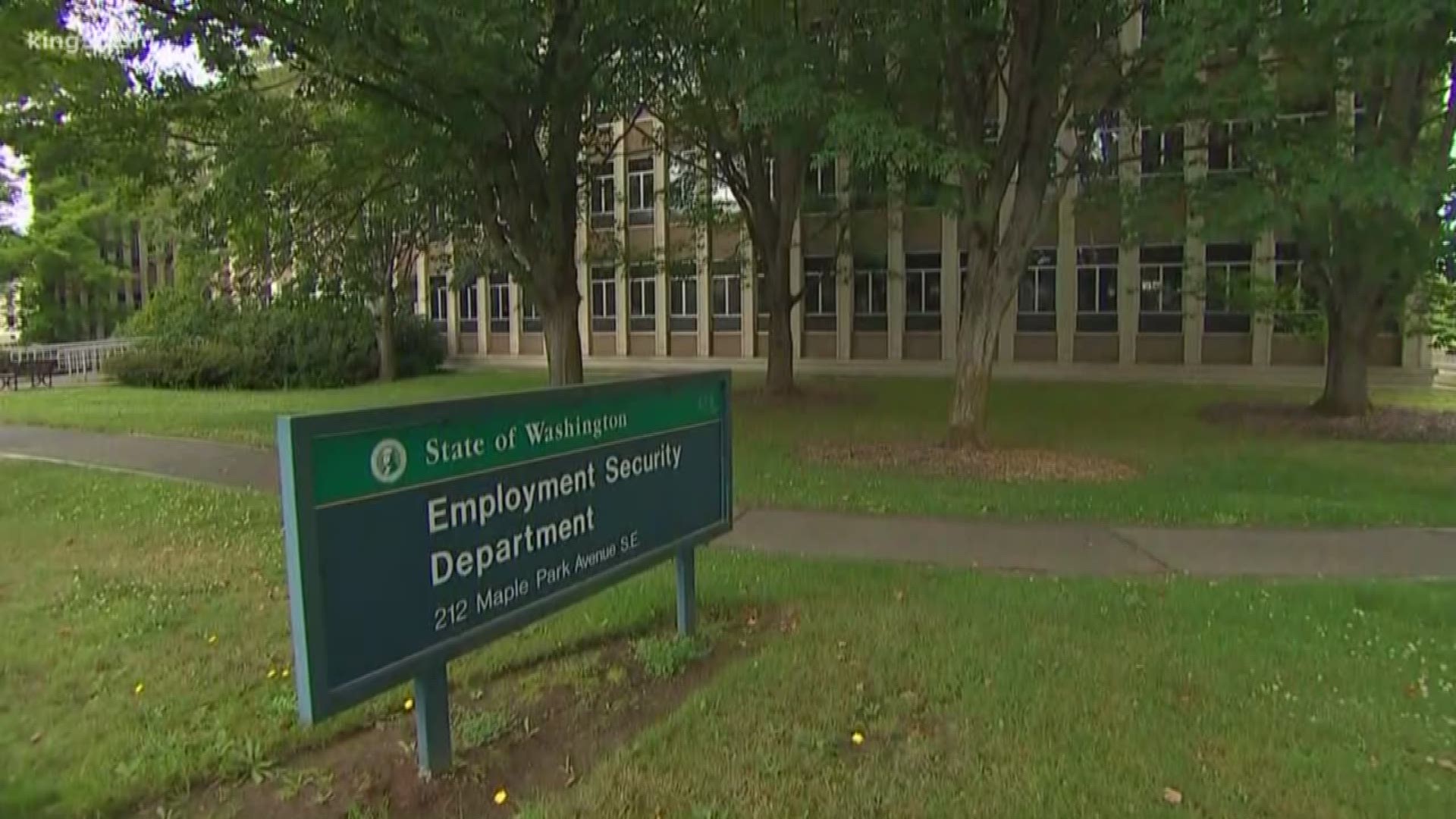Claim
“Working with community and industry partners, our city has put together an aggressive and innovative strategy to create green jobs, save energy, and reduce carbon emissions through deep investments in energy efficiency,” said McGinn.
“Seattle to receive $20 million for financing energy efficiency projects,” City of Seattle Press Release, April, 2010.
“Washington state is using our recovery money as it’s intended, and because of that – we’ve been recognized and awarded additional funding,” Gregoire said.
“Gov. Gregoire announces additional $30 million in recovery funding to weatherize low-income homes,” Office of Governor Press Release, April, 2010.
“Increased weatherization and more extensive efficiency improvements in residential, commercial, and public buildings achieve many benefits, including … creation of family-wage jobs….”
SB 5649, Washington State Legislature, 2009-10.
Facts
Weatherization programs in Washington are not new. For years the state has provided weatherization subsidies to low-income citizens as a social welfare program, reducing the energy costs of the state’s most vulnerable people.
But as the state and nation slipped into economic recession, policymakers, seeking answers to high unemployment, promised to create jobs through stimulus spending on weatherization projects. At the center of this promise was the American Recovery and Reinvestment Act of 2009, known as the Recovery Act. Through the Recovery Act several governmental agencies, including Washington state and the City of Seattle, received stimulus funding to help pay for home weatherization projects.
In Washington state policymakers continue to favor weatherization programs despite the lack of evidence that such programs have provided the economic stimulus and job creation that was promised.
In Washington there are three different weatherization programs that received stimulus spending from the Recovery Act: the state’s low-income weatherization program, a weatherization pilot program through the Washington State University Extension Energy Program and Seattle’s Weatherize Every Building (WEB) initiative.
Background
Low-income Weatherization Program
The state’s low-income weatherization program, operated by the state Department of Commerce, received two installments of Recovery Act spending totaling nearly $60 million. Upon receiving the second round of taxpayer funding, Governor Gregoire announced, “Washington state is using our recovery money as it’s intended, and because of that – we’ve been recognized and awarded additional funding.” The Governor went on to say, “In these tough economic times, this funding provides some added relief for families and will create green job opportunities as well.”
So what was Washington doing right to receive the additional $30 million in weatherization funds?
In an August 2011 press release the Department of Commerce claimed success in the low-income weatherization program. In the release, Commerce officials highlighted several key findings from the annual weatherization report, Washington State Low-Income Weatherization Program Evaluation Report for FY2010, including total households weatherized, as well as economic benefit and jobs created.
According to the Commerce report there were 7,474 households weatherized between July 2009 and June 2010. These homes will benefit from $1.4 million in direct energy savings. In addition, Commerce officials claim approximately 180 jobs were created or retained as a direct result of these weatherization projects.
While these successes sound consistent with the claims made when the funding was provided, a close examination of the results reveals the program is not effectively creating jobs or providing other social benefits.
Seattle’s Weatherize Every Building (WEB) Initiative
The next weatherization program is the City of Seattle’s WEB initiative which received more than $20 million for local weatherization projects. In 2010, Seattle Mayor Mike McGinn unveiled the Seattle Jobs Plan outlining a series of City-run programs, such as energy efficiency weatherization, he believed would stimulate economic growth and offer environmental protection.
According to Mayor McGinn, the City of Seattle would use the more than $20 million dollars from the U.S. Department of Energy to ramp up Seattle’s energy efficiency program. The city’s job plan notes that the funding will provide:
“…incentives and financing tools to rapidly increase the demand for retrofits while simultaneously increasing access and training for low-income residents to become skilled workers. The funding will put up to 2,000 people to work in the green jobs retrofit industry and will help residents and businesses save energy resources.” (Emphasis ours)
During the announcement of the Recovery Act funding, Mayor McGinn cited the poor economy as a reason to support his initiative. He told the audience, “We know how bad the economy is. It’s the worst recession since the Great Depression. We’re going to have to do what we can locally to prepare for the future, to make hard choices.”
Despite these hopes, research shows the city’s weatherization program has struggled to use the stimulus funding to create jobs and provide economic relief.
SB 5649 – Energy Efficiency in Buildings
The final weatherization program we can look at is a pilot program created by the state legislature in 2009.
SB 5649 was supposed to reduce home and business energy bills through increased energy efficiencies and to create family-wage jobs. The legislation expanded existing financial and technical assistance programs by providing additional funding through stimulus spending, and established a state policy goal to assist in the weatherization of 20,000 homes and businesses in each of the next five years.
The weatherization pilot program offered through the Washington State University’s (WSU) Energy Program, unlike the low-income weatherization program, was created to provide grants to programs targeting energy efficiency in middle-income housing and businesses.
The WSU weatherization program has joined with eight local government agencies, non-profits and community service agencies to award nearly $14 million in Recovery Act spending. Each of these partners is to focus on several key goals related to weatherization including, “grow the retrofit industry and workforce with family-wage jobs.”
What are the Results?
The three weatherization programs described above have together received more than $90 million in federal stimulus spending. In each case policymakers took the taxpayer funds with the promise to help stabilize the economy through job creation.
There are several ways to measure the success of weatherization programs. Proponents argue the best measurement is the number of households or buildings weatherized, as well as the total energy savings and environmental benefit provided by the program. Policymakers promised to create jobs, so in addition to these other benefits it is important to also look at job creation numbers.
These metrics show the state’s low-income program falls short in both jobs and energy savings. According to Commerce officials, “Program benefits are 50 percent greater than cost.” Greater scrutiny, however, shows the program benefits exceed costs. Commerce claims the average weatherized household will receive nearly $385 in economic benefit. But less than half of the economic benefit is from direct energy savings, which amounts to roughly $189 per year.
The rest of the economic benefit, $196 per year, comes from speculative, non-energy related benefits. These ancillary benefits include decreases in delinquent bills, improved comfort, higher home values and reduced emissions. Even the authors of the Commerce report are uncertain of the actual benefit from these indirect savings. In the report they note:
“Because non-energy benefits are difficult to measure, there is some uncertainty in our estimates. However, the results of this analysis and others show these benefits are important. They make significant contribution to Program cost effectiveness.”
The average weatherization project cost $6,070 to complete. That means that even with the questionable non-energy benefits counted, it would take nearly 16 years for a project to pay for itself. Without the indirect benefits the pay back on these projects is more than 32 years, equivalent to a project installed when Ronald Reagan was first elected President finally paying off next year. The Commerce report authors also note that the energy savings from the weatherization program will not exceed the costs. The report states: “Note that energy benefits alone do not exceed Program costs for any of the scenarios.”
Based on these results, the weatherization program is not an efficient way to achieve energy savings or economic benefit.
Another way to consider the success of the weatherization programs is by the number of jobs created and the costs associated with creating those jobs.
The Department of Commerce low-income weatherization claims that 180 full-time jobs were created or retained during fiscal year 2010. These jobs were reported using quarterly reports required because federal stimulus funds were used to fund these projects.
In total, the weatherization program spent $42 million during FY2010 to create the 180 full-time jobs. This means that Commerce spent about $233,000 to create each job.
The Seattle program created just 14 jobs. It is unclear how much funding was spent to create these jobs, but in response to criticism for the lackluster results City officials claim“…that they’ve got nearly 400 homes queued up to match up with 13 contractors in the $10 million single family homes half of the grant.”
They go on to claim:
“The other half of the project, $10 million for weatherizing hospitals, large commercial buildings, small businesses, and multifamily homes, is underway with a Washington Athletic Club $1 million retrofit project in the queue. He says they are set to hire two or three workers from the Washington Vocational Institute for that work, which will begin in September.”
Using the information provided by the City, it will spend $1 million to hire “two or three” workers at a cost of between $333,333.00 and $500,000.00 per job.
Finally the WSU Energy Program, which has given $14 million to eight different programs around the state, is reporting that 49 FTE (Full Time Equivalents) are supported with federal stimulus funds. In addition, WSU notes that through its weatherization pilot program more than 170 local contractors with a combined payroll of over 580 employees are also being paid by Recovery funds.
A review of the Form 1512 Quarterly Reports, used to track jobs as required by stimulus funding recipients, completed by WSU shows that during the last two quarters of 2010 and first two quarters of 2011 the FTE job totals was closer to 65. That would mean that WSU’s pilot program is spending more than $215,000.00 per full-time job created.
Costs
So what does all of this mean? Ultimately a high cost per job created, like those seen here, indicates that the project is simply not viable without major public funding.
The question policymakers need to ask when considering such policies is whether or not the program will create new jobs, or just displace existing jobs?
In the Commerce low-income report the authors note that job “estimates do not account for what might have happened if money spent on the Weatherization Program was spent on other government programs or returned to taxpayers.” Simply put, policymakers often fail to ask what real-world impact their policies actually have.
This issue was recently addressed in a work session of the state’s House Ways and Means Committee. Presenter Hart Hodges, Director of the Center for Economic and Business Research at Western Washington University told lawmakers:
“We usually discuss the potential benefits of popular programs… not probabilities of success or costs (including opportunity costs). There’s considerable evidence to suggest picking winners, whether industry sectors or business types, is a low return game... Popular programs often become ‘make work’ programs for economic development practitioners and consultants more than they improve overall economic conditions”
As we have seen with other weatherization programs across the nation, Washington weatherization programs are not bucking the trend. The claims of success in energy savings and job creation often fall short of the promises programs backers made. This isn’t very surprising given policymakers poor ability to pick among winners and losers in the market place.
![]() Download a pdf version of the October 2011 Environmental Watch here.
Download a pdf version of the October 2011 Environmental Watch here.





